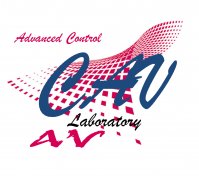Artificial Vision (AV)
Team Head : Pr. ABED Djamel
 |
Team Members
|
1. Objectives
The image analysis of dynamic systems requires, by the complex nature of observed phenomena, the development of new heuristic methods of information processing. The artificial vision, by its dynamic approach of the images to be treated, requires the real time processing of massive information in order to extract the relevant visual information.
The implementation of an artificial vision system is highly dependent on the different applications that one wishes to give it. Some systems act solitarily to solve certain measurement or detection problems. Other machine vision systems are subsystems or components of a larger mechanical design and which, for example, themselves contain other subsystems that control mechanical actuators, planning systems, databases, person-machine interfaces, etc. However, there are more typical or more common applications supported by multiple machine vision systems
The artificial vision group specializes in the research and development of new heuristic methods of complex dynamic image analysis, aiming at the realization of artificial visual brains. The group's approach to artificial vision is both fundamental and innovative. it is about the method of the fractal embedding, the analyzed data (dives) being visual primitives, information which is characterized by its dynamic, massive and complex nature, against which this approach is entirely appropriate.
2. Scientific foundations
Our research activities revolve around themes:
- The development of innovative methods and algorithms, in image processing and vision.
- Study and application of the methodological aspects of multi-image processing and analysis (temporal, spatial, multimodal, multi-spectral, multi image sensor assemblies)
- Development of discrete geometries and topological models adapted to the analysis and the synthesis of images
- Development of innovative models and algorithms for mapping, segmentation, change detection and time tracking.
- Detect different events;
- Organize the information (eg to index databases of images and image sequences);
- Interact (eg, as triggering agent for positioning equipment);
- Analyze material (to classify hardwood for example).
Keywords: Artificial vision, image processing, segmentation, multi-image analysis, change detection, time tracking.


